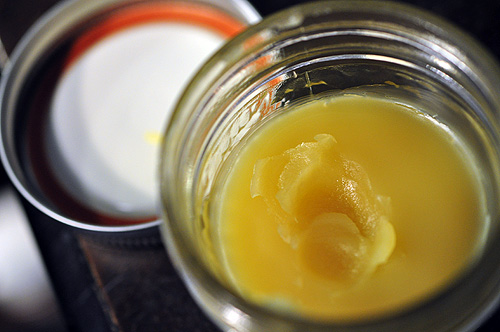How To Make a Natural Petroleum Jelly Alternative

In addition to being highly unappealing from a cosmetic point of view, chapped lips and heels can be exceedingly painful, and tend to cause skin to crack and bleed if not treated immediately. The top remedy for such ailments is generally petroleum jelly – a semi-solid mixture of hydrocarbon, which heals, protects and soothes the skin.
However, despite its obvious effectiveness, many are reluctant when it comes to using petroleum jelly, mostly owing to its possible links to cancer. While these links have not been substantiated by any medical evidence, people tend to avoid petroleum jelly, and products that contain it. If you happen to be one of these people, however, there is no need to walk around with chapped lips – simply whip up a natural petroleum jelly alternative to get the job done.
THINGS REQUIRED:
– 1 oz. beeswax
– 1/2 cup sweet almond oil (extra virgin or cold pressed)
– six 400 IU vitamin E capsules
– Double boiler
– Dark glass jar with tight-fitting lid
Instructions
-
1
Start by putting the beeswax in the top of your double boiler. Allow it to heat up gradually, until the beeswax begins to melt. A double boiler is the most effective method to gently apply the heat – do not resort to using microwaves or standard saucepans for this job, as beeswax can be highly flammable if it comes into direct contact with heat.
-
2
Once the wax is completely melted, take it off the heat, and place it on a heat-proof surface. Proceed to squeeze the oil from the vitamin E capsules into this mixture – these have antioxidant properties, and in addition to nourishing your skin, will increase the shelf-life of your natural petroleum jelly, serving as a natural preservative.
-
3
Next, pour in the sweet almond oil, and stir until the mixture is fully amalgamated. Continue stirring gently, and by this point the natural petroleum jelly alternative should begin to thicken as it cools down.
-
4
Finally, pour the mix into your jar while it is still warm, and allow it to cool before you screw on the lid. Your petroleum jelly alternative is now ready for use. Store it in your refrigerator, or in a cool dark place like a pantry or a cupboard. Use whenever desired, as you would apply commercial petroleum jelly.







